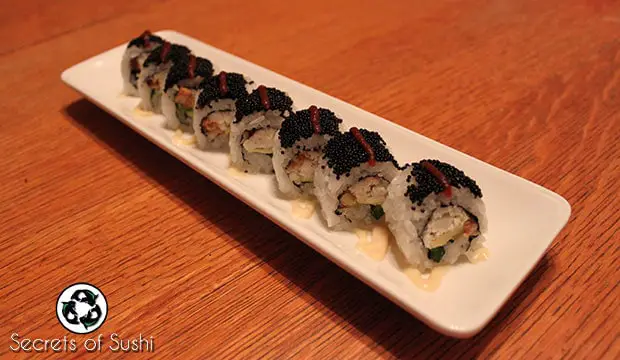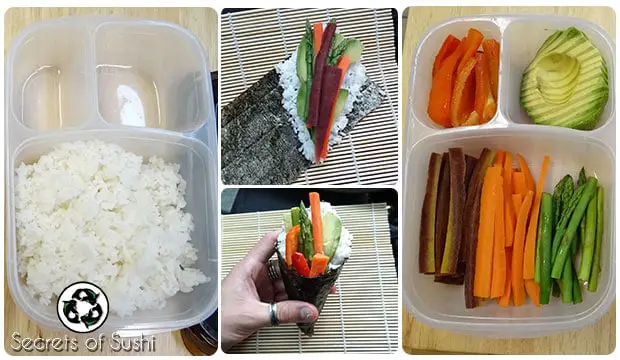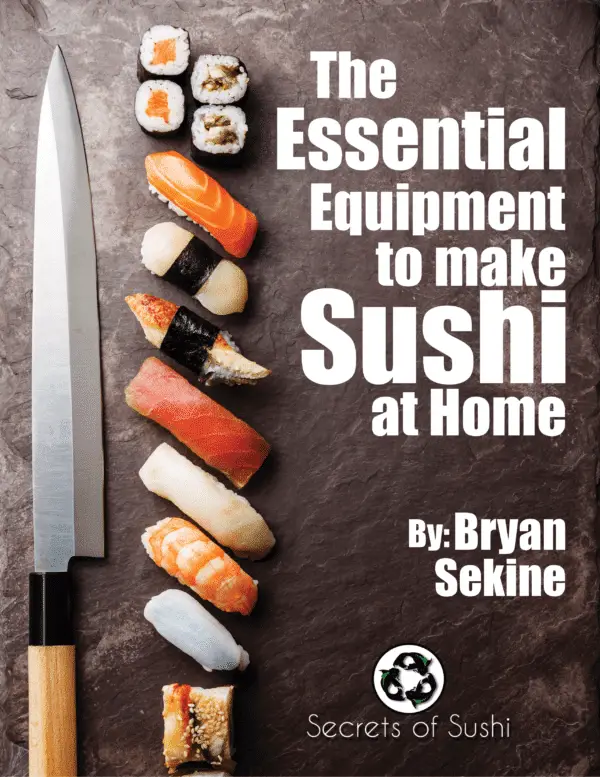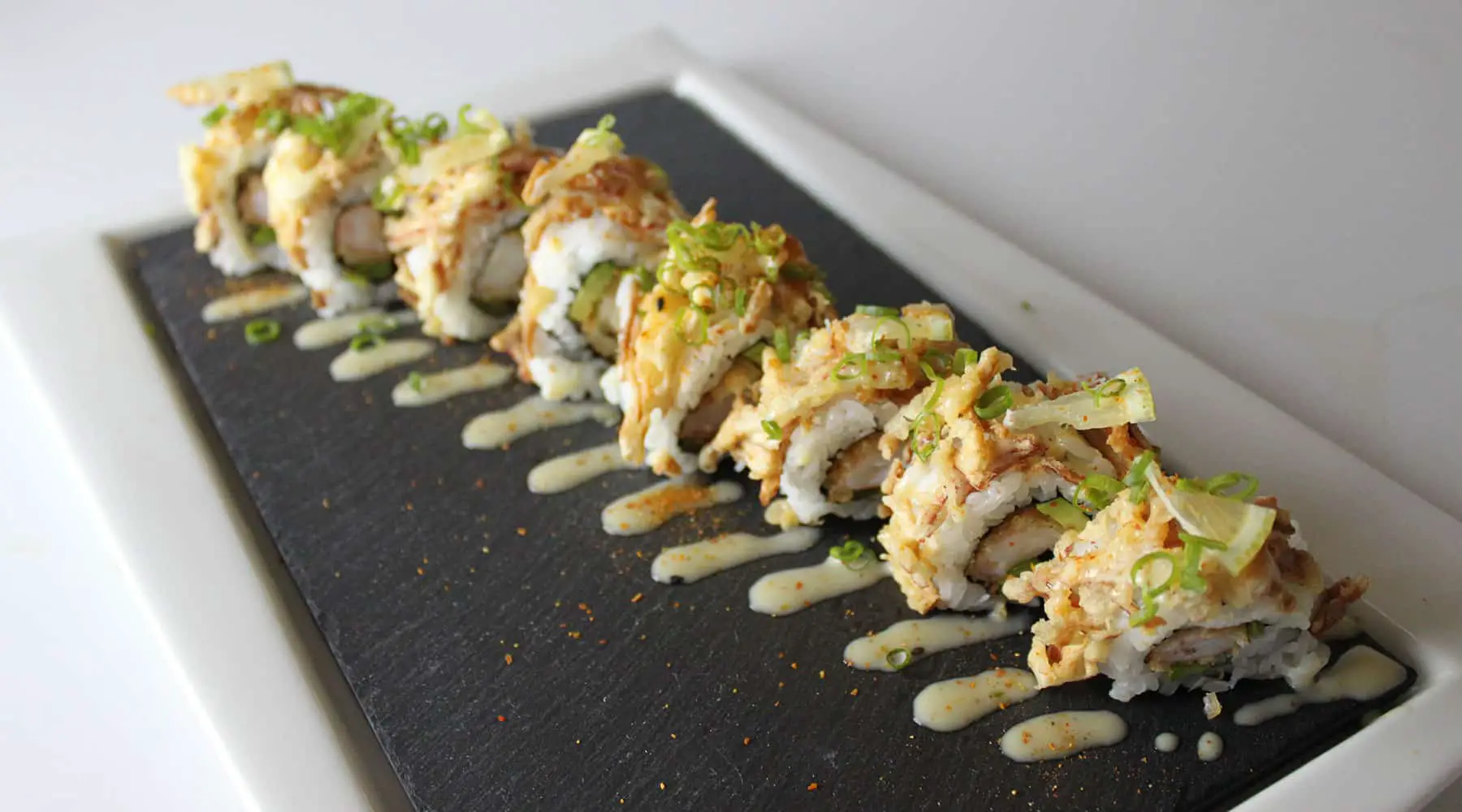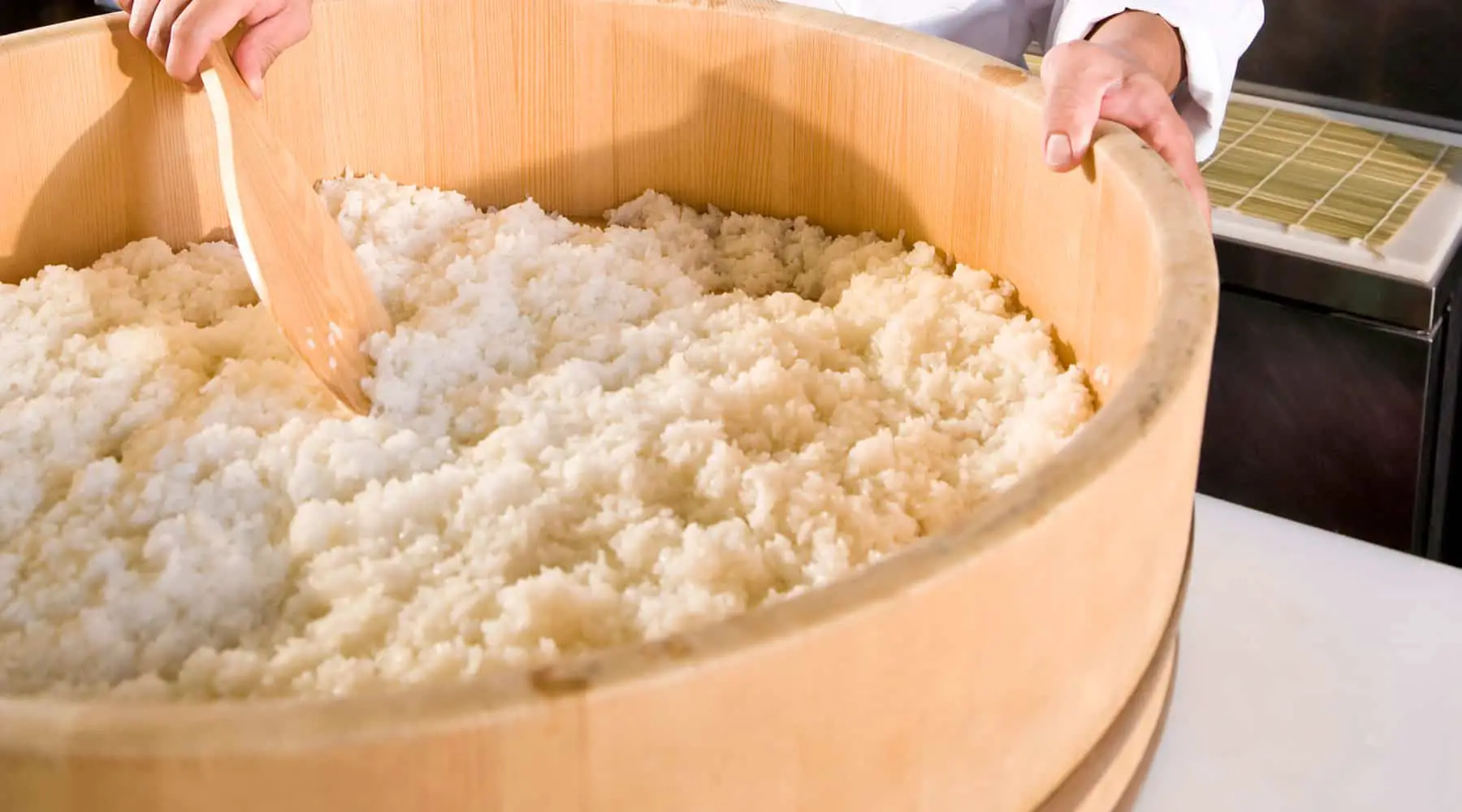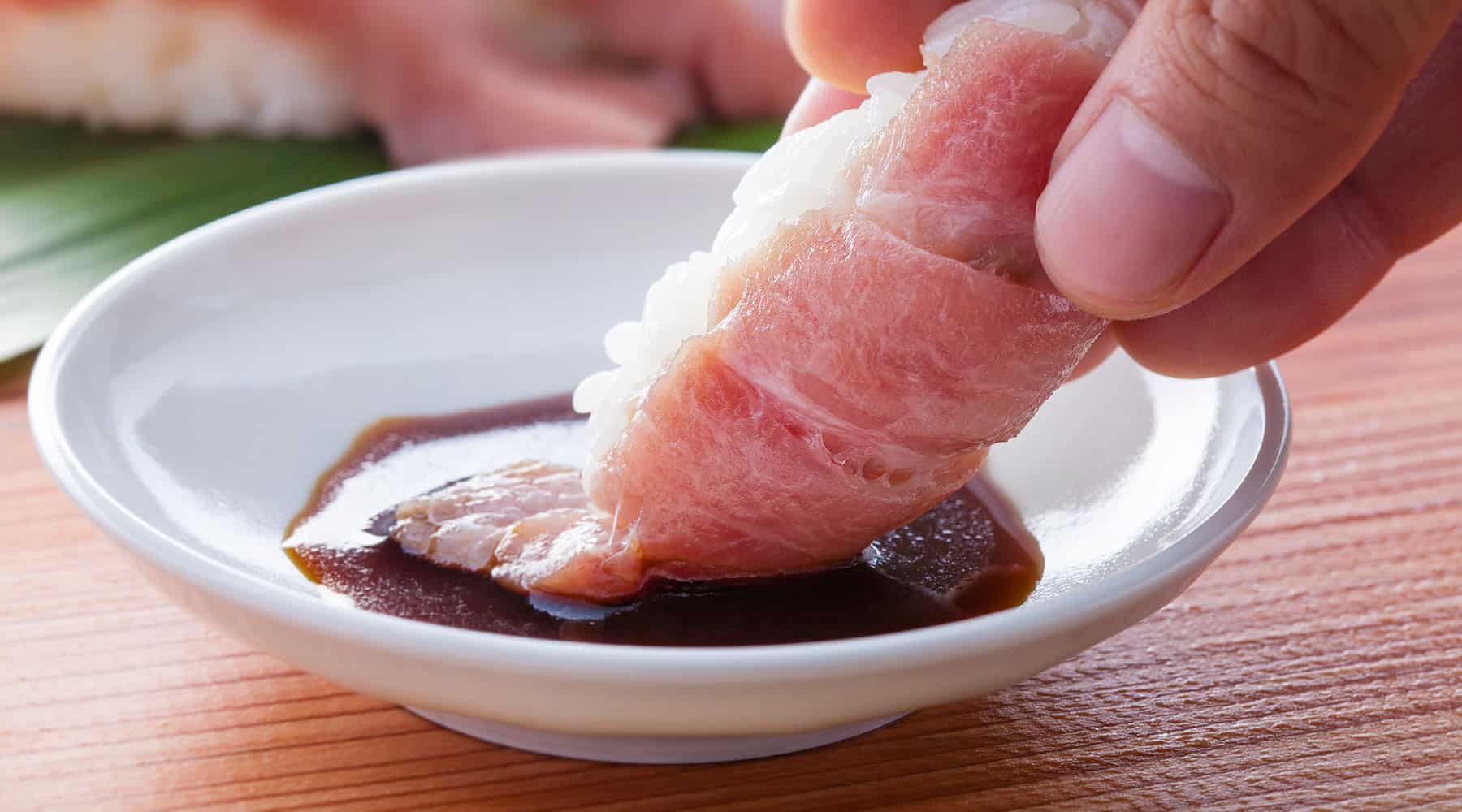Is Pre-Made Sushi Safe to Eat?
When it comes to pre-made sushi, the viewpoints are split pretty evenly down the center. Half of us assume that sushi in a supermarket or grocery store is perfectly fine to eat, while the other half wouldn’t touch it with a ten-foot pole.
Pre-made sushi is technically safe to eat, as it must be refrigerated and abide by HACCP (Hazard Analysis Critical Control Point) guidelines in order to be distributed and sold in third party facilities.
“We worry about eating raw fish, but” — aside from a rare bacterial outbreak — “we haven’t seen problems with it the way we have with E. coli and salmonella in burgers and chicken,” says Peter Snyder, PhD, president of the food-safety consulting group Hospitality Institute of Technology and Management.
In fact, Snyder says that he believes that supermarket sushi might actually be MORE safe to eat than sushi from a restaurant due to HACCP standards.
While I can believe that its technically safe to eat pre-made sushi, I stand firm on the fact that it won’t taste nearly as good as when its prepared in front of you.
Let’s say that you’re crunched for time and needing to fill that sushi craving with a quickness. What should you do? Do you go through with it and buy some pre-made sushi?
Here are the key points to consider before you buy:
Understand Where Your Pre-Made Sushi Comes From.
There are two kingpin producers of supermarket sushi in larger cities: Fuji Food Products (FFP) and Advanced Fresh Concepts (AFC).
Fuji Food Products prepares all of their sushi in one of four main facilities (located in Washington, Colorado, California, and Massachusetts) and ships them to third party establishments. FFP is also responsible for many of the chefs that are seen making sushi inside popular supermarkets like Albertsons, Sprouts, Sams, Super Target, Trader Joes, Vons and many more.
While AFC is best known for being the largest distributor of pre-made sushi and shipping it to various establishments in all 50 states of the U.S. AFC is able to do this by endorsing local sushi bars and providing them with training and sushi standards for preparing sushi. They even employ regional managers to ensure that the quality of pre-made sushi is consistent.
The problem is, in most suburban areas, the sushi found in supermarkets are made by independent sushi businesses that may not have consistent standards or be required to abide by strict guidelines. However, like any other food service establishment, it is in their best interest to sell a product that tastes good and is safe to consume.
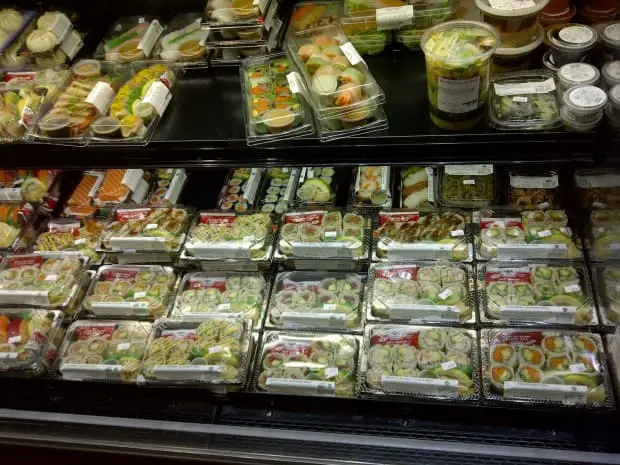
Know What To Look For
While a lot of the sushi you will stumble across is cooked, you can still find several ingredients that are raw. So how can you tell if the raw bits of pre-made sushi is worth the buy? Here’s a few things to look out for:
- Look for establishments that regularly rotate their sushi often.Frequent rotation means that their product is selling. Nothing confirms the quality of a food establishment like doing lots of business. Being able to see a chef preparing the sushi is also a good sign. That means that someone has to make sushi each day.
- Check the date. Most supermarkets get new sushi daily (or at least every other day). But check the Sell By date on the package to be sure.
- Does the fish look dry? Dry fish is indicative of old fish. You really want to see glistening pieces of fish in that box.
- In order to abide by FDA and HACCP regulations, all pre-made sushi must be refrigerated. Never buy sushi that is kept at room temperature from a supermarket.
Understand the Quality Difference of Pre-Made Sushi?
There are a few factors to consider about sushi that is made now and eaten later. The most important factor to consider is refrigeration. Here’s a few negative side effects of refrigerating sushi:
– The rice becomes hard, cold and void of its original flavor: The reason rice is served at near body temperature is because it’s at its peak flavor point and consistency at that point. Once it drops below 60 degrees Fahrenheit, it loses a lot of its flavor and becomes as hard as rocks.
– Seaweed becomes soggy: The once flavorful, crisp nori becomes soggy with moisture and has the consistency of wet tissue paper.
– Sauce soaks the sushi: (try saying that ten times fast) any sauce that is used will naturally saturate the sushi over time. The longer the sauce sits, the more saturated the sushi will become. Have you ever put syrup on some pancakes and then put them in your refrigerator? It’s not a very appetizing sight and neither is refrigerated sushi. There are a few times where I have seen the sushi sauce on the side, though (always a good sign).
Final Thoughts
Sushi was never intended to be refrigerated. Like most dishes, it is best served fresh and made to order. I also don’t know of a single pre-made sushi company that considers the sustainability factors of their chosen ingredients.
If you’ve got the funds then by all means treat yourself to a lovely sushi dinner at your favorite local sushi restaurant. If you got a little bit more time than money, then you should absolutely try your hand at rolling sushi at home. But if you’re short on time and money, then getting yourself a box pre-made sushi will do just fine- just be sure to follow the above guidelines and enjoy your sushi on the same day that you bought it.



